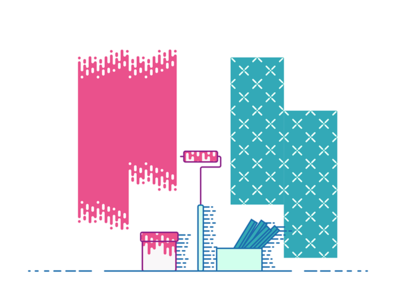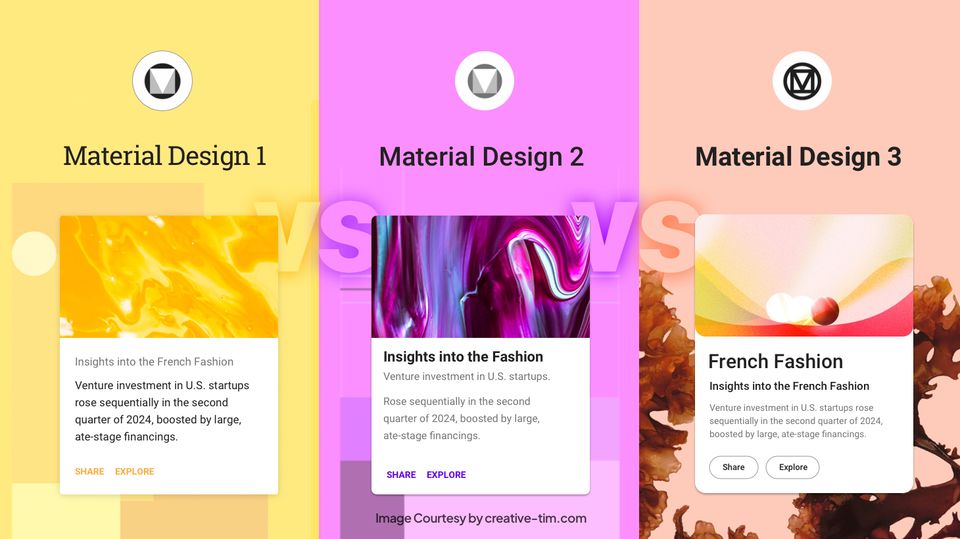Here is a roundup post with several industry people that are talking about the most common mistakes of web design. With no further intros, let’s dive in:

After working on countless website re-designs, I have seen the same mistakes done over and over.
Quality and usability are critical to the success of your business website. Without these basics, conversion rates will be low because it’s difficult to keep visitors on your site. If your website has a high bounce rate, it’s clear that people didn’t find what they were seeking. You often can trace this issue to quality and usability issues.
1. The page takes ages to load
Slow websites put off visitors because they perceive it as a sign of poor quality. If your page does not load in three seconds, a large chunk of your visitors will leave. Web users are impatient, especially when they are on slow data connections. It’s usually faster to press the back button and go to another search result instead of waiting for your site to load. Lack of speed is typically the result of poor optimization, heavy multimedia content or large images. Other factors like overloaded servers and poor coding can also slow down your site.
Solution:
You can use PageSpeedInsights — a free tool from Google.
With PageSpeed Insights you can identify ways to make your site faster and more mobile-friendly.
2. Automatically playing audio or video
Your visitors are not walking into a party; they are looking for information. If you autoplay sounds and videos, you will annoy visitors even before they get a chance to look at your website. People find it irritating, and depending upon where the person is, it could be embarrassing as well. Loading multimedia content takes time and bandwidth, which also increases page load time. If you must autoplay videos, keep them small and start them muted.
3. Poor slider implementation
Use a slider only when it adds value to your site. If you include a slider, implement it correctly. Reloading the page every time the image changes slows down the page and confuses visitors. Size of the pictures should be small, and each slide should give a complete message. Don’t expect readers to click through all the slides or wait for them to load. You should provide the same information as written copy on the page.

4. Painful color combinations
You only need about five to six colors for a good design. Well-designed sites usually use two or three colors and their shade variations for 90% of the page. Use the other colors sparingly. Besides being uncomfortable to the eyes, too many colors may confuse the brain.
Text should be readable. Low-contrast text, for example, yellow text on a white background, is hard to read. Similarly, too much contrast like white on black is also uncomfortable. Avoid dark backgrounds because more people prefer light backgrounds and more websites use them. Switching between dark and light backgrounds causes eye discomfort.
Solution:
Use HTML Color Code
Get HTML color codes, Hex color codes, RGB and HSL values with our color picker, color chart and HTML color names. Let’s go!
5. Misleading page titles
You won’t like it if you click on a promising link and land on a long boring sales page. Nobody likes to be tricked. You will annoy your visitors if you use misleading titles to attract them to your site. Usually, this results in a high bounce rate and ranking degrade. Interesting titles work well only when the content is relevant and well-written. If visitors are constantly leaving your website as soon as they get there, it sends a signal to Google that your website is of low quality.
6. Keyword stuffing
Keyword stuffing makes your text hard to read besides undermining your credibility. A keyword-stuffed text will also lower your rankings because it’s considered search-engine spam. Use keywords sparingly and naturally. For example, if you are offering plumbing services in Miami, it’s fine to mention it a couple of times. You don’t have to remind the reader of every paragraph. Google has gotten a lot smarter concerning context so as long as your website speaks about perhaps a specific plumbing issue, it will understand your business is about plumbing services.
If you use WordPress, you can use Yoast plugin to check your content.
7. Not being mobile-friendly
Mobile optimization is now a basic usability requirement since mobile internet traffic has surpassed desktop traffic. If you do not optimize your site for smaller screens, you will lose a lot of visitors. The effort to zoom and scroll sideways to read a non-optimized site on mobile devices is too much for most users. Search engines recognize this and penalize sites without mobile optimization.
8. Navigation problems
Everyone has been through it. You are impressed by the contents of a website, but you have no idea what to do next. You look around in vain for a menu or a link. If you are like most people, you will give up.
The lack of good navigation and a clear call to action is an issue for many small business websites. Don’t expect your visitors to search for the sitemap or contact information in the footer. Having a strategy for your visitors is important. Make it easy for your visitors to buy your product, subscribe to your mailing list or contact you.
9. Too many interruptions
Pop-ups are excellent tools to persuade users to take action, but people too often misuse them. To make matters worse, some webmasters use concealed close buttons. At some sites, the problem is so acute that you spend a good 30 seconds fending off pop-ups. Allow users to read your content without interrupting them with pop-ups.
Use pop-ups sparingly and don’t display them immediately after the page loads. Slide-ins that appear at the bottom right corner are less intrusive than pop-ups. You can also trigger a pop-up when the person is trying to exit the site. Always make it easy for the user to dismiss pop-ups and avoid labels that seek to make the person look like a fool. These tactics rarely work and worse, they annoy visitors.
In short
When people visit websites, they are looking for something. To hold their interest and keep them on your site, you must ensure quality and usability. If you don’t get the basics right, you will defeat the very purpose of your business website. It will not generate leads, sales or inquiries by failing the fundamentals of an online user experience. “
Henry Cedeno, Founder at Online Impact 360 a Digital Marketing Agency — OnlineImpact360.com
Web design mistakes is a fairly popular question with UX people and as such, you can many answers to your question. I’m not personally an exceptional web designer, but these are some of the problems I have run into.
10. Scroll jacking or Scroll hijacking
Please just never do this, most people hate it, and it sucks. Just don’t.
11. Failing to make your site responsive
Not making your website responsive in this day and age is just unacceptable. With the plethora of devices, people use today, failing to capitalize on that traffic is just laziness and neglect. You should always make your site responsive and accessible on all devices if possible.
12. Overuse of different fonts
The general rule of thumb for fonts is 2 per site. Of course, you can use less, but 2 at the most in most cases.
13. Cluttered content layout
Space things out or at least make them flow in a logical order. If you clutter your site up, it makes it similar in nature to most phishing websites, the ones filled with ads. Just make sure you have a clean, logical layout.
14. Theme consistency
This should be mostly self-explanatory. You should always have the same running theme throughout your website. It shouldn’t randomly switch to different themes on different pages. It’s like using apple type of iOS design then randomly switching to material design. Just don’t do it.
Hope this helps!
Source: Jacob Jimenez, Web Developer since 2008, Full Stack since 2015
Scattered goals, me-me-me, and mushy copy.
15. Scattered goals
They are what you get when multiple stakeholders, e.g., department heads, all demand prominent placement on your site. You end up trying to meet multiple, competing goals all at once, and in so doing serving none of them. The site ends up with wishy-washy objectives like “informing potential customers” or “communicating our brand.”
16. Me-me-me sites do nothing but tell visitors how great your company is, how great your culture is, your process, your history, your blah-blah-blah. It’s embarrassing to anyone but the executive leadership who approved this crap. Prospects, customers, and partners — you know, the people you depend on for revenue — want to know what’s in it for them.
17. Mushy copy:
“We provide a wide array of products and services perfect for a variety of needs from the very specific to the overly broad.” There, I just wrote the boilerplate for a thousand Web sites. Don’t do this. Get specific — why are you better? What’s in it for me? Who exactly do you serve? Why do I want this?
18. Bonus mistake for reading this far:
Leading with your mission statement. Some mission statements are bad. Most are just bland. In a surprise move, “Our mission is to provide the best products and services for our customers.” Really? Well, that’s awesome, because obviously nobody else has thought of that before. Like your competition. Yawn!
Looking for impressive copywriter formulas? Try this one:
The Ultimate Guide to No-Pain Copywriting (or, Every Copywriting Formula Ever)
Source: Per Jørgensen, I’ve been doing this since before some of you was even born.
Most of the egregious and avoidable web design mistakes made by professionally staffed organizations (as opposed to clueless individuals) grow out of the hierarchical, ‘primate pack’ decision-making style of most companies. The prime offenders are:
19. Not doing your audience homework.
Organizational self-regard is no substitute for fact-finding.
20. If someone asks, “who is the site for?”
answering, “it’s for everybody.” Nuh-uh. No site is for everybody. Even free 2-day shipping is not going to entice a sky-clad Jain mystic to try your clothing site.
21. The “Field of Dreams” delusion:
“if you build it they will come.” is a line spoken by a ghostly baseball player in a fictional movie. This is the only context in which it makes sense. It should not guide decision making for expensive corporate websites.
22. Confusing UX
(the comprehensive, evidence-based study and enhancement of the user’s interaction with the organization) with UI (does Mr. Brodnax think the drop-down should go on a red or blue background?).
23. Evaluating wire-frames and prototypes based on the HIPPO (Highest Paid Person’s Opinion) instead of testing them on actual users. “
Jim Ryan, I cover the waterfront.
Here are five mistakes:
24. Not talking to users.
It’s called user experience for a reason. Designing anything without having contact with those who are going to use it is just guessing what needs to be done and is not really user experience — it’s barely designed.
How to make a problem interview.
25. Starting off with interface sketches.
Rushing to a solution means that it stands a good chance of looking great but having a terrible experience.
26. Letting trends and peers guide their thinking.
From the overuse of hamburger menus to parallax scrolling for the sake of it if anyone is doing design it should be the most appropriate solution. Often the current trends can be plundered, but great design answers the needs without copying wholesale something that will be inappropriate.
27. Letting technology guide their thinking.
Should a UX designer code? Well if they do on a project they become a web designer — unless they’re putting together a prototype to demonstrate a particular aspect of the site. Designing in code is something web designers are good at. Web design and user experience design are not the same, especially for larger projects.
28. Getting hooked on buzzwords — it’s all been done before.
So on a project, you might think it’s best to build something to enable a lean process to build an MVP that can then be used to test a hypothesis and if it doesn’t work, pivot. And of course, it’s vital that this MVP is disruptive and is built as part of an agile process.
The issue is that unless you can explain all these things without using those words, then chances are it’s best to avoid them — unless that’s what you need to impress people into following your lead!
There is nothing new in any of the above — it’s just new words have been stuck to them. I mean that seriously. I did a project in 1999 where we ditched wireframes, sketched and used whiteboards, had daily meetings and developers worked in two-week blocks. We boiled down the site to its basic building blocks for users to build something quickly and had a list of requirements ready to go for future iterations. The project manager ran the requirements list and daily meetings. We found out after three blocks of work that something major wasn’t working so we went back and redesigned it, and the devs changed it in the next round.
Same thing — different words.
Stewart Dean, A London based UXer with over 21 years industry experience.
29. Skipping analysis to jump to problem-solving.
You can’t solve the problem until you know what the problem is. For that you need to analyze the problem, supporting the analysis with research as needed. Yet many UX folks begin a project by opening Photoshop or Axure. These are problem-solving tools. Once a design is created, its author will tend to defend, but they’re defending their work, not a solution.
30. Confusing what’s been built with the user’s actual goal.
Most projects are updates of existing experiences, seeking improvement. Implicit here is that the current approach basically works, needing only a few tweaks — a kind of design edit. But was the original approach (the assumed nature of the problem) valid at all? Very often the most fundamental assumptions behind an experience were never consciously considered.
31. Confusing phasing with project completion.
Within the Agile development process particularly, UX professionals must learn to create experiences that also support a phased release schedule. Confusion over what constitutes a phase often leads to incomplete ‘under construction’ releases that are merely part of an incomplete whole. Real phases are both individually complete and part of a greater whole. As such, an early phase may not resemble the final product at all, yet inevitable leads to it. Consider that Steve Jobs first conceived of the iPad, then released a first phase — a non-touchscreen iPod — which led to a smaller iPod — which led to an iPod touch — which leads to the iPhone — which led to the iPad.
32. Creating unique solutions for every use case.
Yes, you cannot leave any user behind, but is it feasible to create a unique solution to address every use case? Not if the project is complex. Complexity comes not from the number of issues an experience must address, but from their mutual dependency. It turns out there is a mathematical formula you can use to get a sense of the number of use cases that arise from a set number of mutual dependencies.
3 mutual dependencies: 3 x 2 x 1 = 6 use cases
4 mutual dependencies: 4 x 3 x 2 x 1 = 24 use cases
5 mutual dependencies: 5 x 4 x 3 x 2 x 1 = 120 use cases
6 mutual dependencies: 6 x 5 x 4 x 3 x 2 x 1 = 720 use cases
7 mutual dependencies: 7 x 6 x 5 x 4 x 3 x 2 x 1 = 5,040 use cases
8 mutual dependencies: 8 x 7 x 6 x 5 x 4 x 3 x 2 x 1 = 40,320 use cases
Needless to say, mutual dependency creates a very steep exponential curve of complexity. Not only will the number of unique patterns overwhelm the user, they will overwhelm the UX team. Common patterns must be found within the dependencies (analysis) to reduce the scale of the problem to that which can be solved.
Tom Elliott, UX Principal, Mobile
Everyone will definitely agree that best websites are the base for both user engagement as well as ranking in search engines. It means that one should never sacrifice beauty over function or vice versa.
33. Missing of H1 tags
The most common mistake that is done by the experts of the web designing service provider is removing of H1 tag, as there is no place available on the page.
H1 tag can be considered as one of the first search engine crawlers that look for determining what the content of the page is all about.
34. Large images and media files
The inclusion of large images, pictures and videos can indeed negatively impact the speed of the site, which may in place result in lower ranks of the business web page. Google usually rewards pages that have a proper speed and load in a quick and easy way. With the assistance of professional SEO services, an entrepreneur can definitely design one’s business website in a perfect fashion.
35. Large number of Pop-ups
In the recent times, Google has warned the websites to eliminate the use of intrusive interstitials and pop-ups.
Taking assistance from the experts of the web designing service providing company, one can perfectly design the website of a business, adhering to the basic necessities and requirements of the company.
36. Inclusion of text in images
At times, kind of wrongdoings is vividly seen. Instead of including a text layer over that of the image, many website designers just simply include text into an image. It can put on a negative effect on business as search engines cannot see or verify images like common people can do.
37. Infinite scroll
This kind of popular web design technique can indeed hurt the performance of the SEO when such functions are carried out in an incorrect manner. The inclusion of infinite scroll loads more and more content as the user gets to the end of the page.
38. Thin content
Services and products pages can be considered as the most important and crucial page for a website. Some of the major mistakes that are associated with the thin content are:
39. Not having a designed page for service/product:
Not having such kind of designed pages on the website, can lead to faulty functions and also eliminate the rank for oneself.
40. The best SEO practice can be:
The best and the most appropriate idea are to have one keyword per page. Having a keyword per page will allow the search engine to target the keyword in a perfect way and make it come in rank, while the same is searched for in various browsers. Once there is the inclusion of, multiple products and services on a single page, it becomes really confusing for the one and the designed website for a business can lose rank for oneself.
Want to learn more about SEO? Train yourself about SEO & Link here: https://backlinko.com
41. Proper text and images on products and services page:
After a page for a business is designed in a proper fashion, there should be the inclusion of appropriate text so that it can catch the attention of the visitors in no time. The experts of professional SEO services providing company knows the importance of having content for a page and therefore and therefore can assist business web page to have proper contents for the pages that a website has in it.
Chiranjit Roy





![15+ Top Black Friday & Cyber Monday Deals for Developers and Designers [2023]](/blog/content/images/size/w960/2021/11/black-friday-deals-developers-1.jpg)
